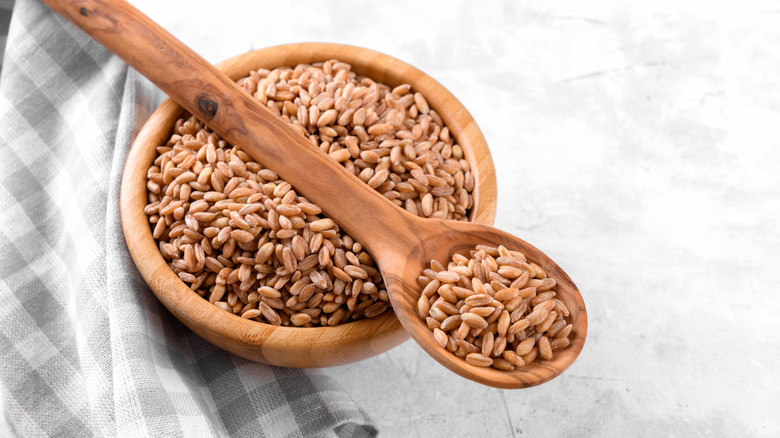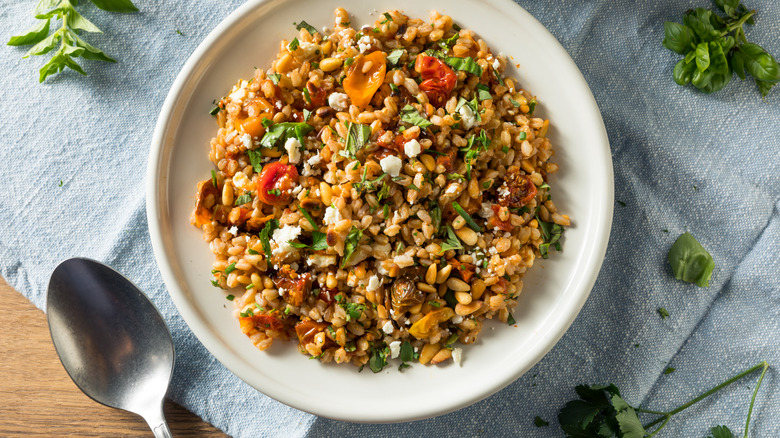The Basic Cooking Method That Works For Just About Any Whole Grain
Rice, corn, wheat, and barley are a few of the most prevalent grains worldwide according to Statista, and they're also the kinds we're most apt to consume in the U.S. All too frequently, we're choosing refined products rather than whole foods, by way of white rice, pasta, bread, and baked goods. However, the USDA recommends that more than half of the grains we consume are whole grains.
By now, we've all learned about the benefits associated with them, from higher fiber content to slower absorption into the bloodstream to increased nutrition (via Harvard School of Public Health), and we know they can be delicious. So why are we still not eating them as often as we should?
There might be some confusion surrounding what's considered a whole grain. Whole grains include the endosperm and germ (the interior and core of the seed) and retain the outer layer known as the bran, and each contributes its own nutritional profile. Refined grains have had the bran and germ removed.
Brown rice and whole wheat pasta are two easy swaps for their refined counterparts, yet sometimes it's nice to think in terms of substitution rather than mimicry. For example, quinoa can be a wonderful replacement for rice; nutty and toothy farro is delightful in place of pasta; and an amaranth breakfast bowl is a comforting change from cold cereal. Whole grains are filling and distinctly flavorful, yet unfortunately, they're shrouded in a bit of mystery and complexity concerning how to cook them.
Pretend it's pasta
Whole grains are actually simple to cook. Directions on packages or in recipes frequently specify a particular water-to-grain proportion and the amount of time they should simmer together. Typically, a steaming period follows. This method can make the preparation of whole grains feel somewhat complicated and fussy.
However, it's really as easy as boiling pasta, and there's no measuring required. Fill a pot approximately ⅔ of the way with water and once it's boiling add some salt. Pour in the grain (for an extra boost of flavor, toast it in a dry pan first) and then taste it periodically, allowing it to cook until it's reached the desired texture — like pasta, aim for al dente. Drain it in a colander or fine mesh sieve. That's it.
While not necessary, you may want to rinse whole grains before using them to remove excess starch and any debris, dirt, or food particles; per NPR, this step safeguards a grain's natural gluten-free status. Also, pre-soaking most grains will decrease the active cooking time; for spelt and wheat berries, it's a must. On the other hand, bulgur, the main ingredient in tabbouleh salad, is 'quick-cooked' by soaking it in hot water and doesn't need to be boiled at all. This ensures that it keeps a perfect chew.
Cooked whole grains store beautifully, so batch them, boil them, and put them in the fridge or deep freeze them to make future meals easier, and healthier, too.

